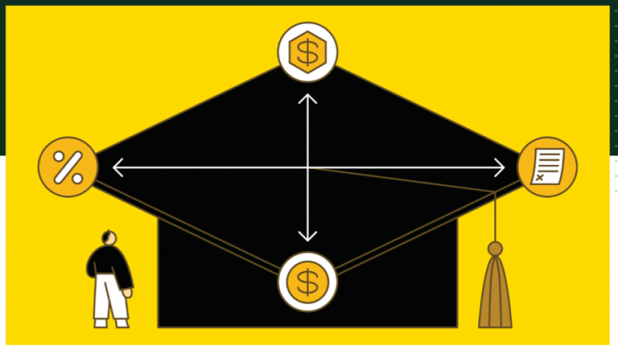K
Kathleen Martin
Guest
Robin Kim graduated from New York University in 2015 with a degree in economics. He borrowed more than $100,000 from the US government and quickly became locked in to high interest rates. He has been trying to pay off his student loans ever since.
Eventually, Kim refinanced through a private lender to lower the interest rate, but he wondered if there was another way out. “I was paying $1,500 a month, every month, to pay off this loan,” he says. “That amount could have been better spent elsewhere.”
A former engineer at Coinbase and a cofounder of Gallery, an online platform people can use to curate and share their NFT collections, Kim had thought of selling cryptocurrency to pay off his loans. But if he did that, he’d have to pay taxes on any profit he made.
Instead, Kim took out a loan through a lending platform called Aave, built on the Ethereum blockchain. He used that money to pay his debt and is now working on paying off the new loan.
How do DeFi loans work?
Decentralized finance is a catch-all term for blockchain applications used to create complex financial products. Since DeFi loans aren’t tied to the traditional banking system, they sometimes have lower interest rates, do not affect the borrower’s credit score, and could in theory be held indefinitely.
DeFi loans can be based on any digital currency. That includes stablecoins, which are cryptocurrencies whose value is tied to external sources like the US dollar. To take out a DeFi loan, borrowers must first deposit collateral in the form of crypto assets worth more than the amount they wish to borrow. How much more is based on a percentage set by the lender. It’s a bit like putting down $100 in one currency to borrow $75 in another.
The borrower receives the loan in, for example, stablecoins, which can then be exchanged for US dollars. That money is used to pay off a debt, and then the borrower eventually pays off the DeFi loan to reclaim the collateral.
With the benefits of DeFi, however, come risks. A borrower’s collateral can be liquidated if its value drops below the value of the loan. Bitcoin, despite having more market liquidity than any other cryptocurrency, is still highly volatile, fluctuating in value by an average of 3% per day. If prices dip too much, borrowers lose their collateral. (Though if the price of the collateral appreciates, that risk is lower.)
Continue reading: https://www.technologyreview.com/2022/04/25/1049478/blockchain-decentralized-finance-defi-student-loan-debt/
Eventually, Kim refinanced through a private lender to lower the interest rate, but he wondered if there was another way out. “I was paying $1,500 a month, every month, to pay off this loan,” he says. “That amount could have been better spent elsewhere.”
A former engineer at Coinbase and a cofounder of Gallery, an online platform people can use to curate and share their NFT collections, Kim had thought of selling cryptocurrency to pay off his loans. But if he did that, he’d have to pay taxes on any profit he made.
Instead, Kim took out a loan through a lending platform called Aave, built on the Ethereum blockchain. He used that money to pay his debt and is now working on paying off the new loan.
How do DeFi loans work?
Decentralized finance is a catch-all term for blockchain applications used to create complex financial products. Since DeFi loans aren’t tied to the traditional banking system, they sometimes have lower interest rates, do not affect the borrower’s credit score, and could in theory be held indefinitely.
DeFi loans can be based on any digital currency. That includes stablecoins, which are cryptocurrencies whose value is tied to external sources like the US dollar. To take out a DeFi loan, borrowers must first deposit collateral in the form of crypto assets worth more than the amount they wish to borrow. How much more is based on a percentage set by the lender. It’s a bit like putting down $100 in one currency to borrow $75 in another.
The borrower receives the loan in, for example, stablecoins, which can then be exchanged for US dollars. That money is used to pay off a debt, and then the borrower eventually pays off the DeFi loan to reclaim the collateral.
With the benefits of DeFi, however, come risks. A borrower’s collateral can be liquidated if its value drops below the value of the loan. Bitcoin, despite having more market liquidity than any other cryptocurrency, is still highly volatile, fluctuating in value by an average of 3% per day. If prices dip too much, borrowers lose their collateral. (Though if the price of the collateral appreciates, that risk is lower.)
Continue reading: https://www.technologyreview.com/2022/04/25/1049478/blockchain-decentralized-finance-defi-student-loan-debt/

